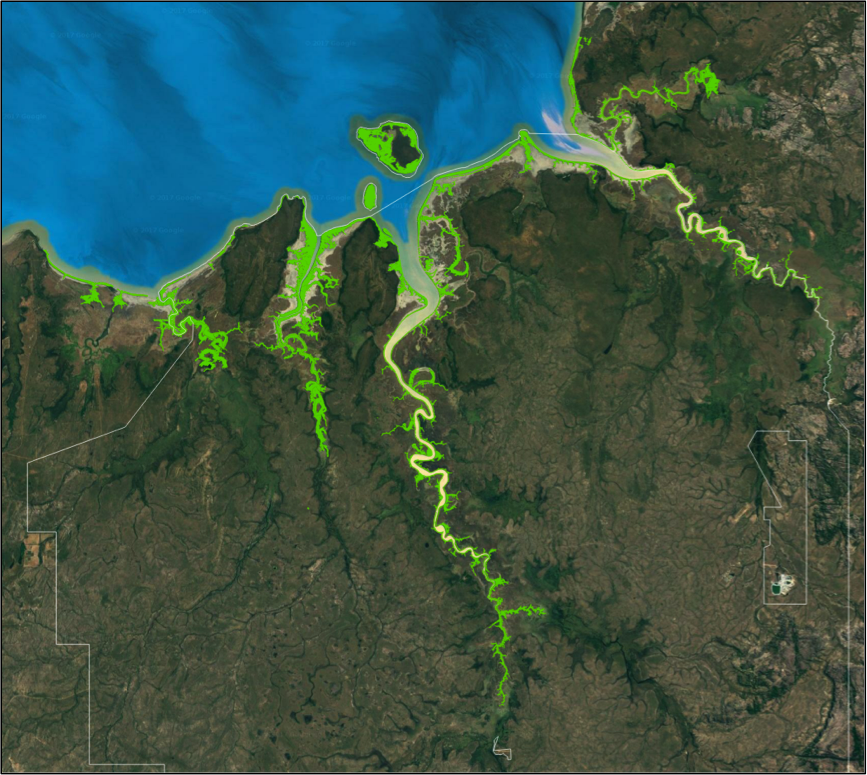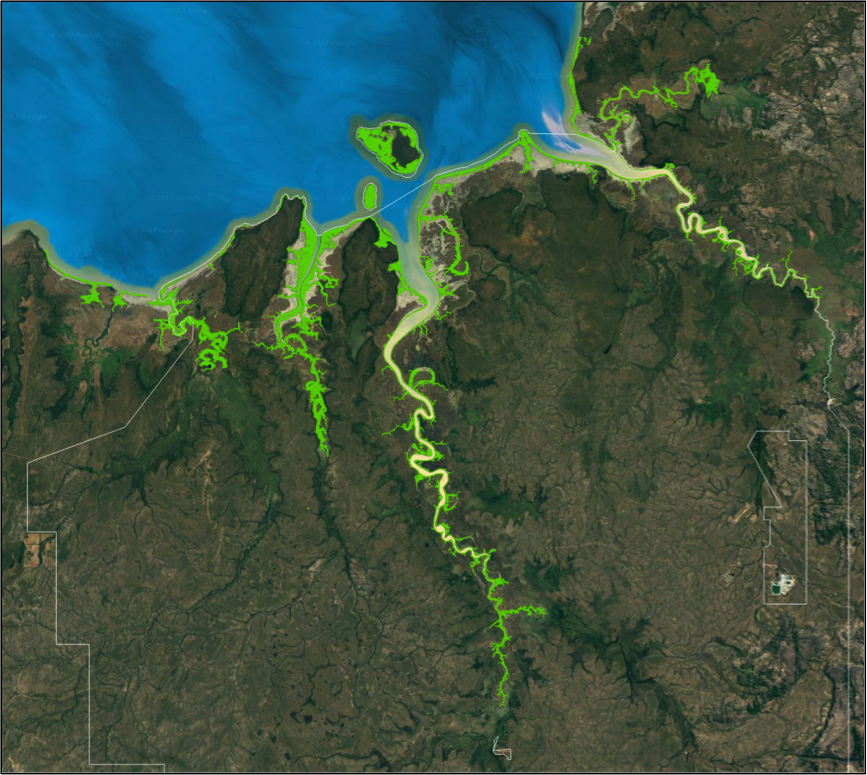This data set consists of a shapefile/kml of mangrove extent for Kakadu National Park mangroves generated from RapidEye data. Information on the details of the attribute fields for the 2014_KakaduNP_MangroveExtent_RapidEye. are located in this document in the section titled 'format.attributes'.
Abstract or Summary RapidEye visible, red edge and near infrared data (of 6.5 m spatial resolution) were obtained for Kakadu NP through the Planet Lab’s Inc. Ambassador Program. Four scenes from 2014 (22 May, 18 August, 27 September and 7 August), and 2016 (5 December) were calibrated to surface reflectance using the ARCSI software (Bunting et al., 2017) and subsequently combined into a two mosaics, one for each year. The areas of Kakadu NP that supported larger sections of mangroves were then identified with reference to the Mudcrab Survey map of mangroves, which was generated by Danaher et al. (2000). However, many areas between the sections identified in this survey were not detected and hence a mask was manually created to also encompass these. The extent of mangroves within the combined area was then classified using a maximum likelihood (ML) classification algorithm and over 200 training samples taken from known areas of mangroves dominated by different species (primarily Avicennia marina, Rhizophora stylosa and Sonneratia alba) as well as adjoining land covers including rainforest, mudflats and water. Once generated, the map of mangrove extent was refined by overlaying a vector outline of mangroves onto the RapidEye data and manually adding or taking away. Following mapping of mangrove extent for 2014, the equivalent area within the 2016 RapidEye image was extracted and the Normalised Difference Vegetation Index (NDVI) was calculated for both images. An NDVI difference image was then generated and a threshold of > 0.15, determined through reference to drone imagery acquired in September 2016, was found to best differentiate mangroves that had experienced dieback from those that had retained their foliage.
...

